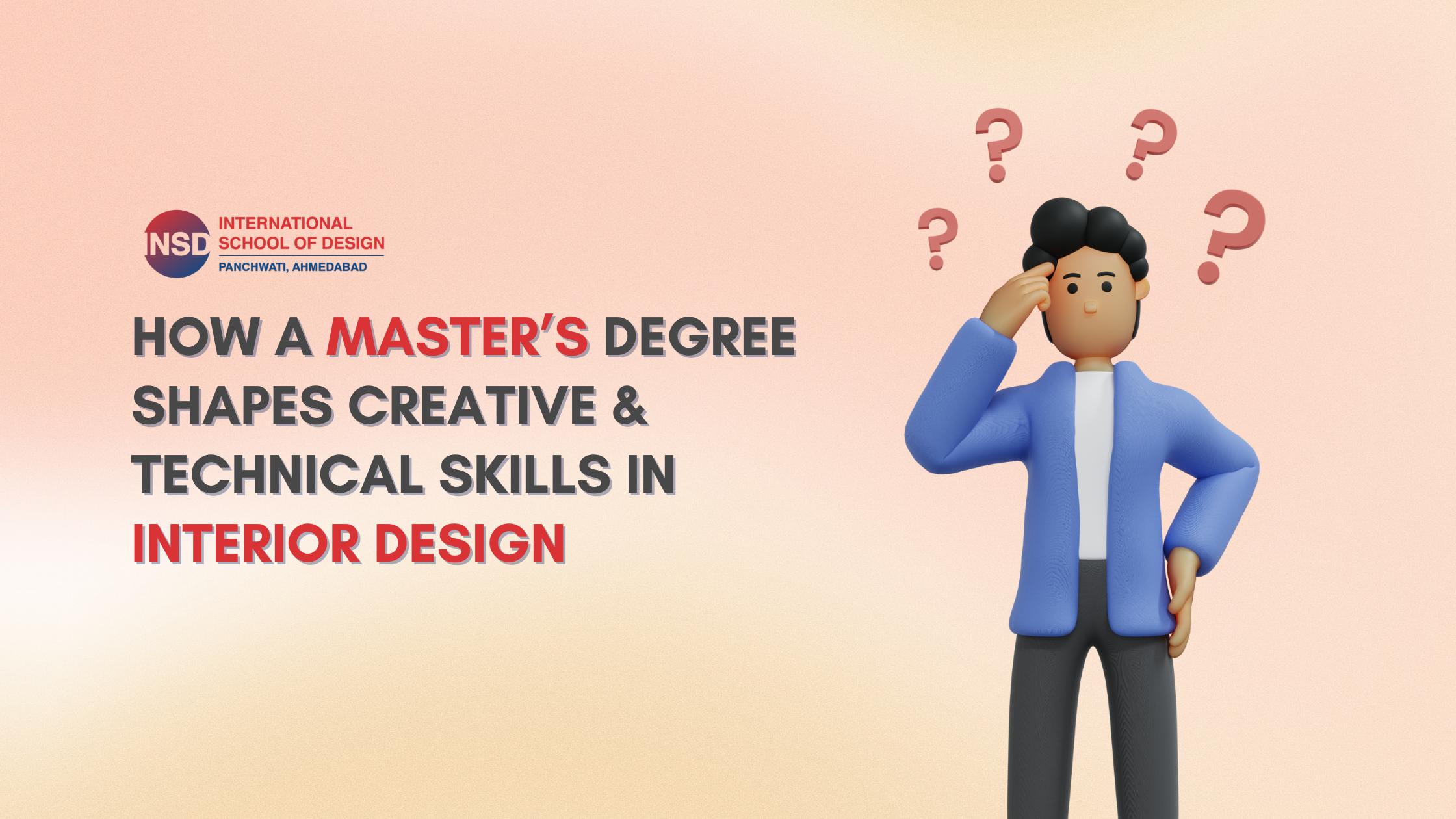Interior design is no longer just about arranging furniture or choosing color palettes. Today, it’s about creating functional, aesthetic, and sustainable spaces that reflect both personality and practicality. While a bachelor’s degree introduces students to the fundamentals, a Master’s in Interior Design takes things to the next level—equipping designers with both creative vision and technical expertise to excel in a competitive industry.
If you’re considering postgraduate studies in interior design, you may be wondering: How exactly does a master’s degree help me grow? Let’s break it down.
Why Pursue a Master’s in Interior Design?
The interior design industry is evolving rapidly. According to Allied Market Research, the global interior design market is expected to reach $255 billion by 2027, driven by urban development, rising demand for functional spaces, and sustainable design practices.
A master’s program in interior design is designed to:
- Deepen your creative abilities.
- Strengthen your technical knowledge.
- Expose you to real-world industry challenges.
- Prepare you for leadership roles in design firms, architecture companies, or entrepreneurship.
What Creative Skills Do You Gain in a Master’s Program?
One of the biggest advantages of pursuing a master’s degree is the space to explore creativity at an advanced level.
1. Conceptual Thinking
You’ll learn how to translate abstract ideas into design concepts that reflect cultural, emotional, and functional needs.
2. Design Innovation
Postgraduate courses encourage experimentation with new materials, textures, and trends—whether it’s earthy tones, biophilic design, or AI-powered visualization.
3. Aesthetic Judgment
Through critiques and advanced design studios, you’ll refine your ability to balance form, proportion, and harmony in spaces.
4. Sustainable & Ethical Design
Creativity today is also about responsibility. Master’s programs emphasize eco-friendly solutions, waste reduction, and energy-efficient spaces.
Also Read: 7 Reasons Why a Master’s in Interior Design is Worth It
What Technical Skills Are Developed in a Master’s in Interior Design?
While creativity makes designs beautiful, technical knowledge ensures they are practical and safe.
1. Advanced CAD & 3D Software Training
Students get hands-on experience with industry-standard tools like AutoCAD, SketchUp, Revit, and AI-powered interior design platforms for precision and visualization.
2. Space Planning & Ergonomics
You’ll master how to design layouts that optimize space—essential for small homes, offices, and urban environments.
3. Building Codes & Safety Regulations
A professional designer must understand structural safety, lighting codes, fire exits, and accessibility standards.
4. Materials & Finishes
From smart materials to eco-friendly alternatives, you’ll study how materials impact durability, maintenance, and design aesthetics.
5. Project Management
Beyond designing, a master’s degree trains you in budgeting, client management, and scheduling—skills that make you valuable in real-world projects.
How Do Creative and Technical Skills Come Together?
The true strength of a master’s program is in integrating creative imagination with technical execution.
- You may design a luxury retail store, but your technical knowledge ensures it meets lighting, safety, and sustainability standards.
- You may conceptualize a minimalist office space, but CAD and ergonomics knowledge help you create layouts that enhance productivity.
- You may explore Vastu-friendly homes or AI-powered interiors, but your academic training ensures designs are backed by research and precision.
This balance makes graduates of a postgraduate interior design course industry-ready.
Career Opportunities After a Master’s in Interior Design
Completing a master’s degree in interior design opens doors to diverse career paths:
- Interior Designer / Consultant – Residential, commercial, or hospitality projects.
- Design Project Manager – Overseeing large-scale projects.
- Sustainable Design Specialist – Focusing on green buildings and eco-friendly interiors.
- Furniture & Product Designer – Creating unique design solutions.
- Academia & Research – Teaching or conducting design research.
- Entrepreneurship – Starting your own design studio.
With advanced technical and creative skills, master’s graduates often move into leadership and specialized roles, setting them apart from bachelor’s-level designers.
Why Is a Master’s Degree Important in 2026 and Beyond?
The future of design is being shaped by technology, sustainability, and cultural diversity. By 2026:
- AI-powered tools will be standard in design education.
- Urbanization will demand smarter, space-saving layouts.
- Global exposure will increase demand for designers with strong academic and practical training.
A master’s degree ensures you’re not just following trends—you’re leading them.
Final Thoughts: Should You Pursue a Master’s in Interior Design?
If you want to push your boundaries as a designer—creatively and technically—a Master’s in Interior Design is the right step. It gives you the vision to design with imagination and the knowledge to execute with precision.
In short: a master’s shapes you into not just a designer, but a problem-solver, innovator, and leader.
Want to Build Your Future with a Master’s in Interior Design?
If this blog resonates with your goals, it may be the right time to take your skills forward with a Master’s program at INSD Ahmedabad.
At INSD Ahmedabad, you’ll find:
- Advanced training in creative concepts and technical design skills.
- Hands-on learning with CAD, 3D modeling, and AI-powered design tools.
- Courses that emphasize sustainability, Vastu principles, and modern design trends.
- Flexible online and offline study options, perfect for students and working professionals.
Whether your dream is to work with global firms or launch your own design studio, a Master’s in Interior Design at INSD Ahmedabad ensures you’re ready for the future.


